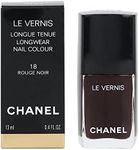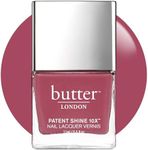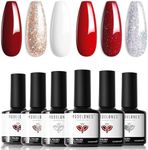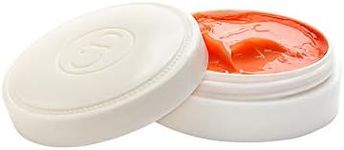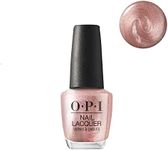Buying Guide for the Best Nail Polishes
Choosing the right nail polish can be a fun way to express your style and keep your nails looking great. With so many options available, it's important to consider what matters most to you, such as how long you want the polish to last, how quickly it dries, and what kind of finish you prefer. Understanding the key features of nail polishes will help you find the best fit for your needs and lifestyle.FinishThe finish of a nail polish refers to how it looks once it dries on your nails. Common finishes include glossy, matte, shimmer, metallic, and glitter. Glossy finishes are shiny and classic, while matte finishes have no shine and look more understated. Shimmer and metallic finishes add sparkle or a reflective look, and glitter polishes have visible sparkles. Your choice should depend on your personal style and the occasion. For everyday wear, many people prefer glossy or matte, while shimmer and glitter are great for special events or when you want to stand out.
LongevityLongevity describes how long the nail polish lasts without chipping or fading. Some polishes are designed to last just a few days, while others, like gel or long-wear formulas, can last up to two weeks or more. If you want a polish that stays perfect for a long time, look for long-wear or gel options. If you like to change your nail color often, a regular polish that is easy to remove might be better for you.
Drying TimeDrying time is how quickly the nail polish sets after you apply it. Some polishes dry in just a minute or two, while others may take much longer. Quick-dry formulas are great if you’re in a hurry or don’t have much patience for waiting. If you enjoy taking your time and want a smooth, even finish, regular polishes with longer drying times can work well, but be careful to avoid smudging.
Application BrushThe application brush is the tool attached to the cap that you use to paint your nails. Brushes come in different shapes and sizes, such as wide, flat, or thin. A wider brush can cover the nail more quickly and evenly, which is helpful for beginners or those with larger nails. A thinner brush allows for more precision, which is useful for nail art or smaller nails. Think about your nail size and how steady your hand is when choosing a brush type.
IngredientsIngredients in nail polish can vary, and some people prefer formulas that are free from certain chemicals like formaldehyde, toluene, or DBP. These are often labeled as '3-free,' '5-free,' or even '10-free,' depending on how many potentially harmful ingredients are left out. If you have sensitive skin, allergies, or want a more natural product, look for polishes with fewer chemicals or those labeled as vegan or cruelty-free.
Color RangeThe color range refers to the variety of shades a brand or product line offers. Some brands have just a few classic colors, while others offer hundreds of shades, including trendy or seasonal options. If you like to experiment or match your nails to your outfits, a brand with a wide color range might be best. If you stick to a few favorite shades, a smaller selection may be enough.
Removal ProcessThe removal process is how easy or difficult it is to take off the nail polish. Regular polishes usually come off easily with standard nail polish remover, while glitter, gel, or long-wear polishes may require more effort or special removers. If you want a hassle-free experience, choose polishes that are easy to remove, especially if you change your nail color often.
